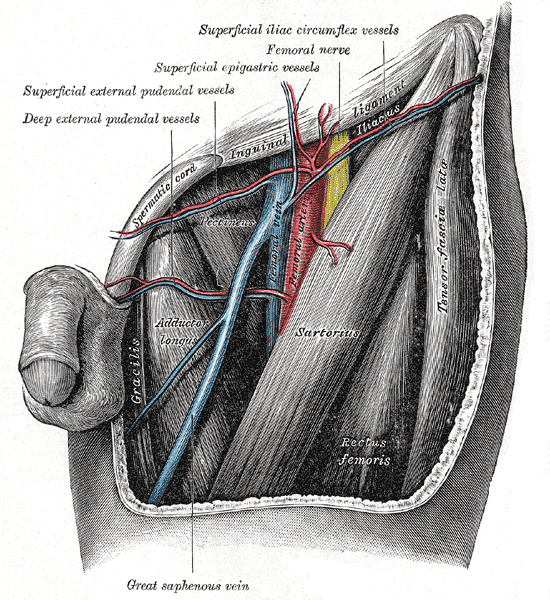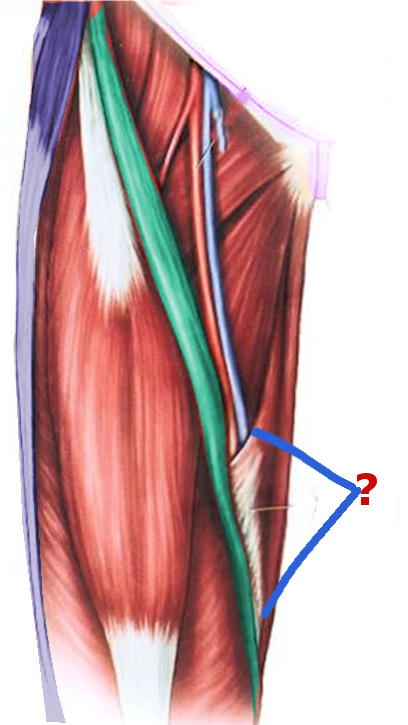[1]
Thiayagarajan MK, Kumar SV, Venkatesh S. An Exact Localization of Adductor Canal and Its Clinical Significance: A Cadaveric Study. Anesthesia, essays and researches. 2019 Apr-Jun:13(2):284-286. doi: 10.4103/aer.AER_35_19. Epub
[PubMed PMID: 31198246]
[2]
Burckett-St Laurant D, Peng P, Girón Arango L, Niazi AU, Chan VW, Agur A, Perlas A. The Nerves of the Adductor Canal and the Innervation of the Knee: An Anatomic Study. Regional anesthesia and pain medicine. 2016 May-Jun:41(3):321-7. doi: 10.1097/AAP.0000000000000389. Epub
[PubMed PMID: 27015545]
[3]
Vora MU, Nicholas TA, Kassel CA, Grant SA. Adductor canal block for knee surgical procedures: review article. Journal of clinical anesthesia. 2016 Dec:35():295-303. doi: 10.1016/j.jclinane.2016.08.021. Epub 2016 Oct 11
[PubMed PMID: 27871547]
[4]
Wong WY, Bjørn S, Strid JM, Børglum J, Bendtsen TF. Defining the Location of the Adductor Canal Using Ultrasound. Regional anesthesia and pain medicine. 2017 Mar/Apr:42(2):241-245. doi: 10.1097/AAP.0000000000000539. Epub
[PubMed PMID: 28002228]
[5]
Menon D, Onida S, Davies AH. Overview of arterial pathology related to repetitive trauma in athletes. Journal of vascular surgery. 2019 Aug:70(2):641-650. doi: 10.1016/j.jvs.2019.02.002. Epub 2019 May 18
[PubMed PMID: 31113722]
Level 3 (low-level) evidence
[6]
Kasapis C, Gurm HS. Current approach to the diagnosis and treatment of femoral-popliteal arterial disease. A systematic review. Current cardiology reviews. 2009 Nov:5(4):296-311. doi: 10.2174/157340309789317823. Epub
[PubMed PMID: 21037847]
Level 1 (high-level) evidence
[7]
Bendtsen TF, Moriggl B, Chan V, Børglum J. The Optimal Analgesic Block for Total Knee Arthroplasty. Regional anesthesia and pain medicine. 2016 Nov/Dec:41(6):711-719
[PubMed PMID: 27685346]
[8]
Panchamia JK, Niesen AD, Amundson AW. Adductor Canal Versus Femoral Triangle: Let Us All Get on the Same Page. Anesthesia and analgesia. 2018 Sep:127(3):e50. doi: 10.1213/ANE.0000000000003570. Epub
[PubMed PMID: 29905612]
[10]
Black CM. Anatomy and physiology of the lower-extremity deep and superficial veins. Techniques in vascular and interventional radiology. 2014 Jun:17(2):68-73. doi: 10.1053/j.tvir.2014.02.002. Epub
[PubMed PMID: 24840960]
[11]
Launico MV, Sinkler MA, Nallamothu SV. Anatomy, Bony Pelvis and Lower Limb: Femoral Muscles. StatPearls. 2023 Jan:():
[PubMed PMID: 29763184]
[12]
Jeno SH, Launico MV, Schindler GS. Anatomy, Bony Pelvis and Lower Limb: Thigh Adductor Magnus Muscle. StatPearls. 2023 Jan:():
[PubMed PMID: 30521263]
[13]
Walters BB, Varacallo M. Anatomy, Bony Pelvis and Lower Limb: Thigh Sartorius Muscle. StatPearls. 2023 Jan:():
[PubMed PMID: 30422484]
[15]
Lawrence PF, Harlander-Locke MP, Oderich GS, Humphries MD, Landry GJ, Ballard JL, Abularrage CJ, Vascular Low-Frequency Disease Consortium. The current management of isolated degenerative femoral artery aneurysms is too aggressive for their natural history. Journal of vascular surgery. 2014 Feb:59(2):343-9. doi: 10.1016/j.jvs.2013.08.090. Epub
[PubMed PMID: 24461859]
[16]
Zhou Y, Ryer EJ, Garvin RP, Irvan JL, Elmore JR. Adductor canal compression syndrome in an 18-year-old female patient leading to acute critical limb ischemia: A case report. International journal of surgery case reports. 2017:37():113-118. doi: 10.1016/j.ijscr.2017.06.030. Epub 2017 Jun 17
[PubMed PMID: 28654852]
Level 3 (low-level) evidence
[17]
Cogo A, Lensing AW, Prandoni P, Hirsh J. Distribution of thrombosis in patients with symptomatic deep vein thrombosis. Implications for simplifying the diagnostic process with compression ultrasound. Archives of internal medicine. 1993 Dec 27:153(24):2777-80
[PubMed PMID: 8257253]
[18]
Uhl JF, Gillot C. Anatomy of the Hunter's canal and its role in the venous outlet syndrome of the lower limb. Phlebology. 2015 Oct:30(9):604-11. doi: 10.1177/0268355514551086. Epub 2014 Sep 10
[PubMed PMID: 25209386]


